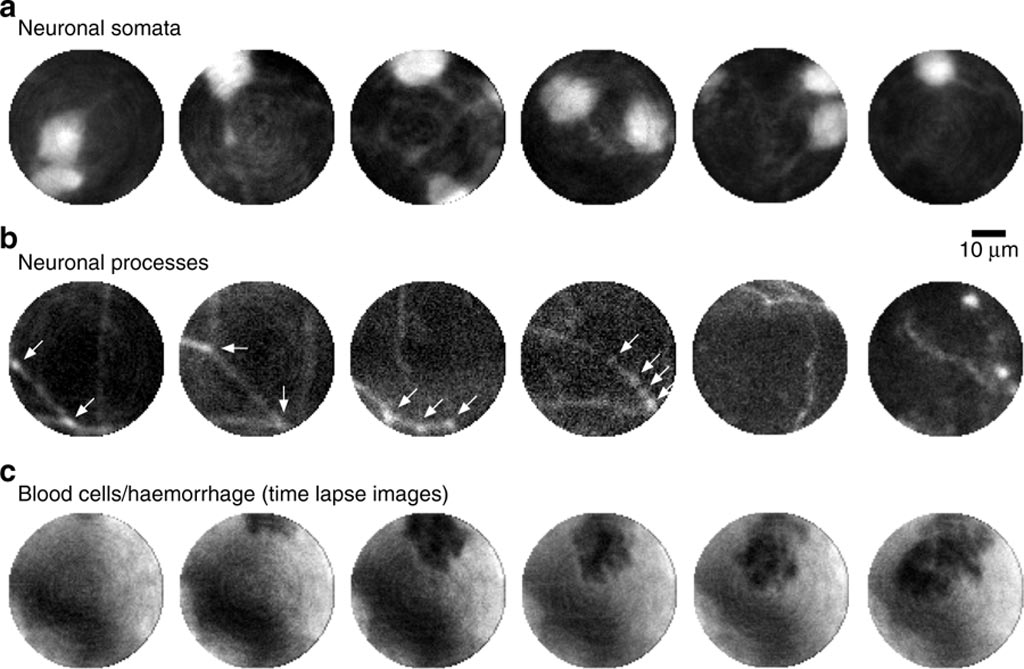Fiber-Based Endoscopy Enables Deep-Brain Imaging
By MedImaging International staff writers
Posted on 24 Dec 2018
A real-time fluorescent imaging probe captures neuronal dynamics in deep-brain layers at a resolution of around one micron, according to a new study.Posted on 24 Dec 2018
Developed by researchers at the Leibniz Institute of Photonic Technology (IPTH; Germany) and the University of Edinburgh (United Kingdom), the multimode fiber (MMF) endoscopic probe provides a compact, ultranarrow, high-speed system for fluorescent imaging that can achieve an average resolution of 1.18 µm across a 50-µm field of view, resulting in 7-kilopixel images at a rate of 3.5 frames per second. The hair-thin probe also overcomes the limitations on size inside living tissues, leaving no structural and functional impact.

Image: Neuronal somata, neuronal processes, and time-lapse images of a hemorrhage in the primary visual cortex (Photo courtesy of IPTH).
The compact, high-speed imaging system was used to resolve micron-sized subcellular neural structures in an anaesthetized mouse model involving 5 mice. The reduced footprint of the imaging probe allowed observations of structures deep within various brain tissues, including in vivo resolution of neuronal connectivity in previously inaccessible structures, such as the visual cortex and the hippocampus. The researchers suggest that the technique will help explore many knowledge gaps, such as those regarding memory formation and sensory perception. The study was published on November 21, 2018, in Light: Science and Applications.
“We have designed a highly optimized optical pathway for fluorescence-based imaging of deep brain structures with micrometric spatial resolution, while causing minimal damage to the tissue surrounding the fiber penetration area,” concluded senior author Tomáš Čižmár, PhD, of IPTH, and colleagues. “Deploying the most efficient wavefront-shaping algorithms and, currently, the fastest possible hardware for light modulation, this provides adequate spatial and temporal resolution for fluorescent imaging of subcellular structures in living tissues. The robust design allows continuous imaging for periods of several hours.”
Digital micromirror devices (DMDs) have recently opened up a whole new range of opportunities in the field of holographic control of light propagation in complex media by increasing light modulation refresh rates by several orders of magnitude. As a result, the foci behind a MMF can now be scanned at several tens of kHz, acquiring images at speeds approaching video rates. In addition, single fiber-based imaging not only shortens the post-operative recovery period but also eliminates the need to implant optical imaging elements.
Related Links:
Leibniz Institute of Photonic Technology
University of Edinburgh














